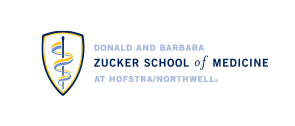Patent foramen ovale in patients with pulmonary embolism: A prognostic factor on CT pulmonary angiography?
Publication Date
2018
Journal Title
J Cardiovasc Comput Tomogr
Abstract
© 2018 Society of Cardiovascular Computed Tomography Background: Patent foramen ovale (PFO) in patients with acute pulmonary embolism (PE) represents a risk factor for mortality, but this has not been evaluated for CT pulmonary angiography (CTPA). The purpose of the present study was to assess the relationship between PFO and mortality in patients with acute PE diagnosed on CTPA. Materials and methods: This retrospective study included 268 adults [173 women, mean age 61 (range 22–98) years] diagnosed with acute PE on non-ECG-gated 64-slice CTPA in 2012 at our medical center. The images were reviewed for PFO by a panel of cardiothoracic radiologists with an average of 11 years of experience (range 1–25 years). CT signs of right heart strain and PE level were noted. Transthoracic echocardiograms (TTE), when available (n = 207), were reviewed for PFO by a cardiologist with subspecialty training in advanced imaging and with 3 years of experience. The main outcome was 30-day mortality. Fischer's exact test was utilized to compare mortality. Results: PFO prevalence on CTPA was 22% (58/268) and 4% (9/207) on TTE. Overall 30-day mortality was 6% (16/268), 9% (5/58) for patients with PFO and 5% (11/210) for those without (p = 0.35). CT signs of right heart strain trended with higher mortality, but statistically significant only for hepatic vein contrast reflux [14% (6/44) vs 4% (10/224), p = 0.03]; right ventricular (RV) to left ventricular (LV) diameter ratio >1 [8% (13/156) vs RV:LV ≤ 1 3% (3/112), p = 0.07], septal bowing [10% (4/42) vs without 5% (12/226), p = 0.30]. Conclusion: PFO was demonstrated on CTPA in a proportion similar to the known population prevalence, while routine TTE was less sensitive. Mortality was non-significantly higher in patients with acute PE and PFO in this moderate-sized study. A larger study to answer this clinically important question is worthwhile.
Volume Number
12
Issue Number
4
Pages
271 - 274
Document Type
Article
Status
Faculty, Northwell Researcher
Facility
School of Medicine; Northwell Health
Primary Department
Molecular Medicine
PMID
DOI
10.1016/j.jcct.2017.11.009


